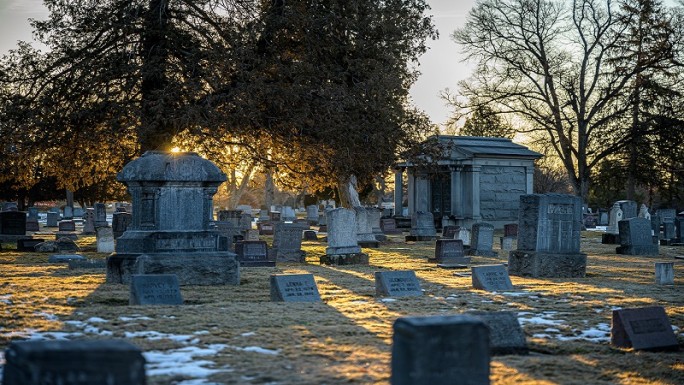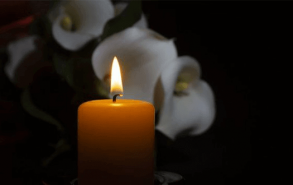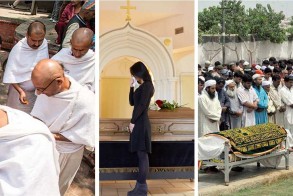Lastjourney Blog
What is the Zoroastrian Tower of Silence?

 Table of Contents
Table of Contents Reading Time: 4 minutes
Attending a funeral for a family member or friend is a common occurrence, with similar customs and cultural influences passed down through the years. The beginning and end of life are ingrained in the culture, frequently through long-standing customs that make up the farewell ritual.
Death is universal, yet different countries and cultures have diverse ways of mourning a loved one’s death. The faith, beliefs, and traditions of the family all influence the death and funeral rites.
Zoroastrianism is an ancient Persian religion that dates back to at least 4,000 years. It is one of the world’s earliest religions, and it is said to be the world’s first monotheistic faith. Today the religion has an estimate of 100,000 to 200,000 worshippers worldwide.
With their beliefs, Zoroastrians may have shaped many of today’s religions. Some of the Parsi cremation traditions, such as the Tower of Silence, are still practised today. Let’s understand this ancient ritual a little more here.
What are Zoroastrians beliefs on Death?
The views of Zoroastrians on the afterlife are similar to those of other religions. They believe in a single god and that there is life after death. Zoroastrians believe that, like Christians, worshippers go to paradise or hell depending on their life choices. Zoroastrians have unique views on death that set them apart from other religions.
Death is brought about by wicked forces, and it is not welcome. Evil forces affect the body of the departed after death. The body decomposes, and Zoroastrians believe that touching it affects those who are still alive.
Family and friends must sit a specific distance away from the body. Before entering the house, special preparations such as cleansings are made. The main ritual separates the deceased from the rest of society. It’s an age-old custom that still has an impact on India today.
What is a Tower of Silence (Dakhma)?
The Towers of Silence are enormous stone buildings in the shape of a circle. They are an important part of the Parsi cremation rituals. Vultures eat the bodies of Zoroastrians who are buried in the tower. Believers consider this to be the most natural and safe manner of disposal for both the community and the environment.
The structure has a tall foundation, about 8-10 feet, with steps reserved for accommodating a body leading to the inside. The outside row is for men, the middle row is for women, and the bottom row is for children. A well in the centre – basically a pit paved with stone slabs – is roughly 150 feet in diameter or less to match the dakhma’s size.
Motive
The cleanest way for the body to disintegrate for Zoroastrians is to leave the deceased in the tower and allow vultures to eat their flesh. As previously stated, Zoroastrians consider death to be the greatest wicked act. The deceased is contaminated as evil floods into the body.
The ultimate invention to keep evil away from loved ones was the Tower of Silence. The Tower of Silence also keeps dead bodies out of the environment. Cremation, for example, pollutes the air and causes fires, whereas burial pollutes the earth.
What happens in a Tower of Silence?
Loved ones arrange rituals before a body is placed in the Tower of Silence. Certain customs must be maintained to protect the community, friends, and family from the evil inside the body. Loved ones assemble for three days and nights to sing and pray for the departed. No one is allowed to touch the body once the person is dead. If they do, they will need to participate in a particular cleansing rite.
One rite is particularly important. Before the body is taken to the tower, Zoroastrians perform it three times. The sagdid ceremony, also known as the dog viewing, purges the evil from the dead. A dog examines the deceased three times: once after the body has been washed, once before the body is removed from the tower, and finally just before the corpse bearers enter the tower. Because the corpse carrier is so essential, there are typically two types:
- Nasâsâlârs. They transport the body to the tower and place it in the house.
- Khandhias. These bearers merely transport the body to the tower and then pass it over to the Nasâsâlârs.
Once the body is taken to the tower, the corpse bearers arrange it in a particular row and receptacle. Rows for males, women, and children are separated. The soiled clothing is quickly removed and destroyed by the bearers.
After being placed to rest, the body is stripped of its clothing, which is later destroyed, and the body is eaten by dozens of birds, mostly vultures, within an hour, leaving just the bones. These are drained into a well known as a bhandar. Before being removed, the bones are usually allowed to dry for a few days in the blazing heat.
Are Towers of Silence still relevant today?
Today, the Towers of Silence has become less practicable and more difficult to implement. One of the main reasons being a contentious practice. The religion is practised mainly in Iran and India. Iran outlawed the practice back in the 1970s, whereas it is in jeopardy in India. As cities grow, the amount of area available for towers to remain separate decreases. In addition, the absence of vultures in the area poses a significant threat to this old burial tradition.
The Zoroastrian tower of silence is a one-of-a-kind manner to pass away. Even though it is becoming increasingly unworkable, a tiny number of practitioners continue to practise it. We all wish to remember our loved ones and pay tribute to them.
Read Also:-Cremation Ceremony
Your email address will not be published. Required fields are marked *












